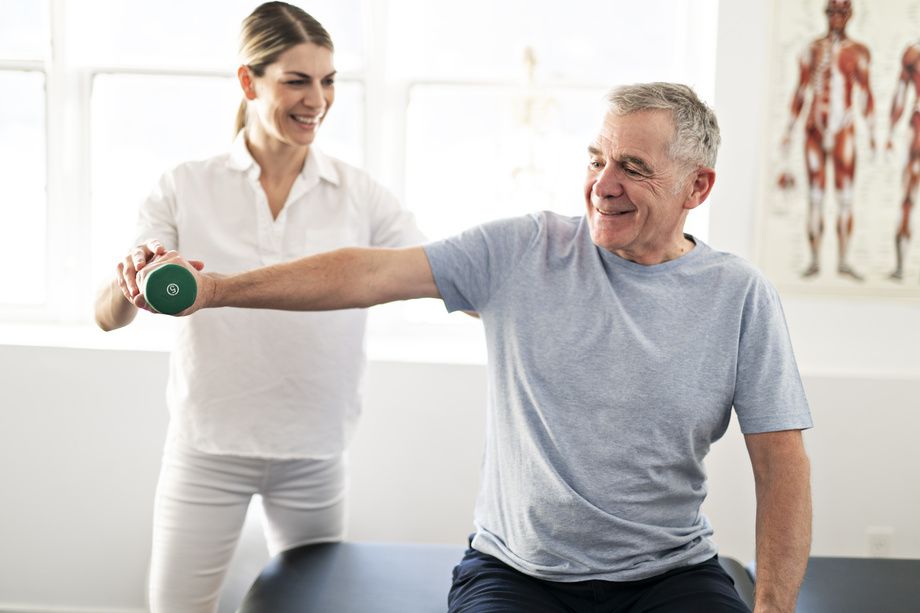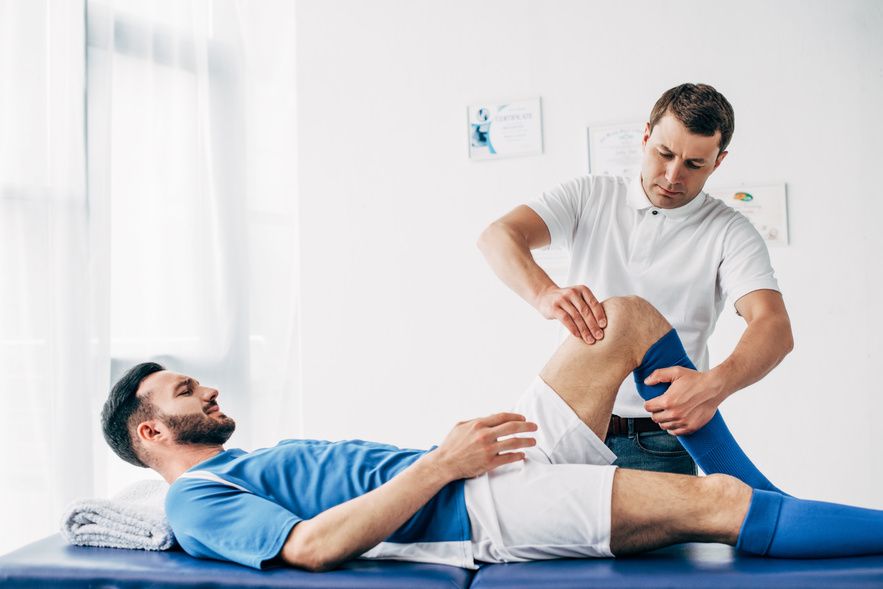Musculoskeletal pain is a common ailment that virtually everyone will be afflicted with at some point in their life, whether it be the result of a sprain, strain, overexerted muscles, or repetitive motions that give rise to muscle tension or tendonitis. However, chronic and severe joint pain that results from arthritis, is estimated to affect 1 in 4 adults in the U.S. alone, who suffer this severe pain according to the CDC. That is 15 million people having to contend with chronic joint pain, and that does not even account for the total number in the arthritis demographic!
This same phenomenon is paralleled in westernized countries especially, with regards to osteoarthritis specifically, largely as a result of advancing age, inflammatory western diets and obesity. Arthritis and resulting joint pain can be a debilitating disease that leads to progressively damaged and degenerated articular joint tissue that can destroy and compromise joint function, as well as underlying bone tissue at said adjoining joint surfaces. Mobility, exercise and quality of life are severely compromised by chronic pain in these persons.
Moreover, arthritis is a significant burden on healthcare and society as a whole, as these affected populations have reduced capacity to contribute to society and in the workforce, as compared to their unaffected counterparts. One viable solution to this predicament is the role of physical therapy to rehabilitate and increase mobility for individuals who experience this chronic agony.

What is physical therapy?
Physical therapy, otherwise termed physiotherapy, is a licensed profession that employs credentialed and regulated primary health care professionals that specialize in conditions that impact movement, ambulation and function. Physiotherapists may help persons afflicted with congenital issues or acquired conditions that impair neuromuscular function, neurological diseases, persons with autoimmune diseases, injuries, musculoskeletal issues, pelvic floor dysfunction, joint issues and cardiopulmonary diseases among other conditions.
What methods are used?
As was mentioned, the practice of physiotherapy helps to improve strength and mobility, reduce pain, stiffness and discomfort and improve overall bio-mechanical function to improve life quality. They may also employ one or more of the following therapies:
- Heat and cold therapy.
- Designing splints to support limbs.
- Dry needling.
- Massage and soft tissue manipulation.
- Teaching patients exercises and stretches to perform.
- Ultrasound.
- Transcutaneous electrical stimulation.
- Compression.
- Hydrotherapy.
- Teach use of assistive devices like canes and walkers.
- Teach proper posture, load carrying, lifting and gait techniques.

What is arthritis?
Arthritis, as the name denotes, is essentially inflammation (-itis) of the joints (arthro-). This is often a progressive, chronic and degenerating disease that results in profound joint inflammation and destruction of the joint capsule, such as a reduction in the cushioning synovial fluid that lubricates this region located between two attached bones (often articulating and weight bearing joints), and cartilage. This causes pain, reduced mobility, and a reduced capacity or inability to perform daily tasks such as walking up and down the stairs.
Arthritis is not one distinct disease, as there are many different types and pathologies that result in joint inflammation. There are four main types of arthritis including:
- Autoimmune arthritis: An autoimmune disease where the body’s endogenous immune system attacks and destroys joint tissue and can include lupus and rheumatoid or psoriatic arthritis.
- Inflammatory or osteoarthritis: Manifests usually in elderly or obese persons, and those with a family history of arthritis and persons with a previous injury. This is the most common type of arthritis and usually affects large weight-bearing joints like hips and knees and also elbows and shoulder joints.
- Infectious arthritis: Causative agents may include different species of fungus, bacteria or viruses that infiltrate into the joint capsule. This is a particularly dangerous type that requires treatment of the underlying infectious pathogen as well as the joint destruction.
- Metabolic arthritis: Is arthritis caused by persons afflicted with gout, resulting in uric acid accumulation in joints.

Role of physical therapy in joint pain and arthritis
The goals of physical therapy in the context of arthritis and joint pain would be to:
- Alleviate pain.
- Improve and optimize mobility and range of motion in affected joints.
- Implement and maintain exercises that are enjoyable, tolerable and effective in this population.
- Enable arthritic pain sufferers the ability to engage in life activities and perform daily tasks.
- Attempt to stall or slow joint deterioration.
- Teach patients rehabilitative exercises, and ways to reduce compressive load forces on affected during certain motions.
Supplemental advice
Depending on the background pathophysiology that is causing arthritis, treatment options may include steroids to dampen the immune response, capsaicin topical ointments, NSAID’s, surgery, immunotherapy or antimicrobial medications. With respect to lifestyle management, there are several options one can implement in their daily lives to alleviate and treat joint pain, including:
- Weight loss and healthy weight management to lessen the weight on load-bearing joints
- Following a healthy diet rich in fruits and vegetables containing phytonutrients and antioxidants, fiber-containing complex carbohydrates and healthy fats such as mono- and polyunsaturated omega 3 fats to decrease inflammation.
- Decrease the quantity of ultra-processed foods, saturated fats and refined, simple carbohydrates that potentiate inflammation.
- Engage in regular, low-impact exercise.
- Heat and cold therapy.
- Using supplements such as glucosamine, collagen, chondroitin sulfate and hyaluronic acid, which are required for the production of glycoproteins and glycosaminoglycans found in joint tissues, can relieve pain and slow disease progression. Other supplements that may be useful include vitamin D and herbs with antioxidant and anti-inflammatory attributes such as Boswellia serrata, turmeric and green tea.
- At Jupiter Laboratories, our 30 day supply of JointFuel360 consisting of 60 capsules per bottle, contains a proprietary blend of collagen and hyaluronic acid to help rebuild joint tissue, and proven antioxidants that reduce inflammation including resveratrol, turmeric and Boswellia serrata extract.
References
Brett Sears, P. T. (2020, January 21). What to expect from physical therapy for knee pain. Verywell Health. Retrieved December 17, 2021, from https://www.verywellhealth.com/physical-therapy-for-knee-pain-2696411
Centers for Disease Control and Prevention. (2020, May 22). Joint pain and arthritis. Centers for Disease Control and Prevention. Retrieved December 17, 2021, from https://www.cdc.gov/arthritis/pain/index.htm
Contributors, W. M. D. E. (2020). What is a physiotherapist? what they do, when to see one, and what to expect. WebMD. Retrieved December 17, 2021, from https://www.webmd.com/a-to-z-guides/what-is-a-physiotherapist
Felson, S. (2020). Supplements for arthritis and Joint Pain. WebMD. Retrieved December 17, 2021, from https://www.webmd.com/arthritis/arthritis-guide
Gregory, P. J., Sperry, M., & Wilson, A. F. (2008, January 15). Dietary supplements for osteoarthritis. American Family Physician. Retrieved December 17, 2021, from https://www.aafp.org/afp/2008/0115/p177.html
Kavuncu, V., & Evcik, D. (2004, May 17). Physiotherapy in rheumatoid arthritis. MedGenMed : Medscape general medicine. Retrieved December 17, 2021, from https://www.ncbi.nlm.nih.gov/pmc/articles/PMC1395797/
Mayo Foundation for Medical Education and Research. (2021, September 15). Arthritis. Mayo Clinic. Retrieved December 17, 2021, from https://www.mayoclinic.org/diseases-conditions/arthritis/diagnosis-treatment/drc-20350777
What is arthritis?: Arthritis foundation. What Is Arthritis? | Arthritis Foundation. (2021). Retrieved December 17, 2021, from https://www.arthritis.org/health-wellness/about-arthritis/understanding-arthritis/what-is-arthritis
Wong, C. (2021, October 8). Can hyaluronic supplements treat arthritis? Verywell Health. Retrieved December 17, 2021, from https://www.verywellhealth.com/hyaluronic-acid-supplements-89465
